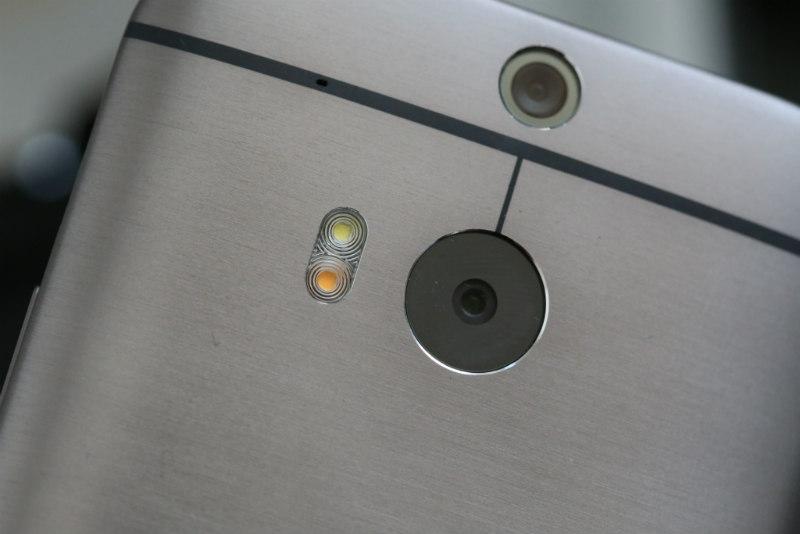
This morning was kind of an oddly relaxed morning for me. As I sat with my coffee and looked out the window at the sunny (yet freezing) great outdoors, my phone made a familiar bong noise that signified I had received an e-mail. From that point on, my mind started to drift to anything but outdoorsy thoughts: I started thinking about phones. Specifically, phones I no longer had but really enjoyed my time with. It wasn’t too long ago where I was indignant on carrying my iPhone 4S for what seemed like forever, but one phone managed to pull me away from that ideal: the HTC One (M7). Once the thought of this phone popped into my head, my mind began to trail off into thinking about the One’s past, present, and future.
(And yes, I know - what kind of weirdo spends a peaceful morning thinking about phones? Apparently this one.)
When I first heard about HTC’s plan to pull a phoenix and rise from the ashes with the M7, I was intrigued, yet not entirely convinced. After all, HTC had been having a bit of a sour streak from about 2011 throughout 2012 - there wasn’t a whole lot of reasons to believe that HTC would be able to recover that easily, especially with just one device. However, as it turns out, serving up just one device was probably the best decision that HTC could have made. HTC’s biggest issue was releasing an overwhelming amount of phones and not being able to keep up with updates, so the best way to combat this issue was to tone down the amount of releases; an even better solution was to just release one. It also didn’t hurt that HTC managed to pull one of the most premium-looking Android devices anybody had ever seen out of their ear.
The M7’s aluminum unibody design was a good start for getting people interested. An Android phone that looked so high quality was a rarity.
What was better was that underneath that premium design was premium specs. The M7 was right on par with Samsung’s Galaxy S4, another flagship titan that was released around the same time. The biggest challenge between the two was that HTC didn’t have the reputation that Samsung had so gainfully earned with the Galaxy S line, especially after the spectacular year Samsung just had with the Galaxy S III. Otherwise, the HTC was a nearly perfect match against the Galaxy S4.
Well, except maybe for the whole UltraPixel concept, which I think still throws a lot of people off. Even I was initially skeptical on what UltraPixel meant. I knew it had “bigger sensors”, but I had never heard about camera sensors before this. All I knew was that “UltraPixel” ultimately dwindled down to only having 4 “megapixels”, and as somebody who isn’t terribly savvy in camera technology, “megapixels” was the term I was most familiar with. The more megapixels a camera had, the better it was supposed to be. What’s with this UltraPixel nonsense?
But it turns out that UltraPixels weren’t such a bad thing. In fact, I still think some of the photos I took with my M7 were some of the best photos I had ever taken using a smartphone - especially in low lit situations. It didn’t take much for UltraPixel to win me over.
That being said, I’m just one person, and not everybody agreed with me. The fact that HTC continued with the UltraPixel business in the release of the HTC One (M8), which came out earlier this year, was a risky move considering just how many people didn’t buy the One because of UltraPixel. HTC also didn’t make the megapixel count any higher on the rear-facing camera: it still featured a 4-megapixel UltraPixel camera, although this time with Duo Camera action and some minor tweaks and improvements that actually show fairly well when in comparison with one another.
The M8 itself was another great release from HTC, though, all things considered. The specs were again on par with the competition, the design was once again prestigious, and overall it was extremely pleasant to use (these small hands of mine aside).
Still, despite all of that, the term “UltraPixel” just doesn’t seem to sit well with people overall. Adding in to the fact that after doing more research, “UltraPixel” still meant having a 4-megapixel camera on the back of your phone, people understandably gravitate to phones with higher numbers still - even 8-megapixel cameras seem to please people. I think that’s where HTC needs to start in order to make the One line, and the M9, a success next year.
I don’t expect HTC to ditch the UltraPixel name. What I do hope they can do is bump up the megapixel count. 6 would be fine, 8 would be better, 10 or 13 would probably be perfect. But really, anything is better than keeping it at 4 again. Almost everything else HTC does with the phone has been perfect. They use proper processing speeds, RAM, memory (even adding in external memory support this year, which was awesome), design, speakers - there’s very little that I can nit pick at the One about, other than the camera.
I consider the One to be one of the best Android phones on the market, but I truly think that it’s the camera that’s been holding it back. I hope that HTC plans to change things up a little bit more this year with the “M9”, because I think that’s the phone’s most confusing aspect. Superior UltraPixel technology or not, people still care about megapixels at the end of the day.
Image via TechCrunch